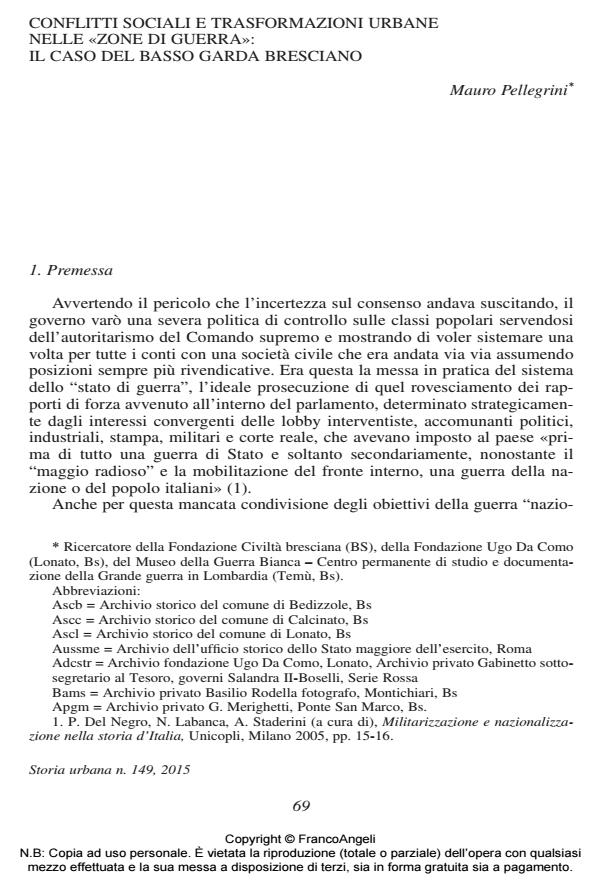Social Conflicts and Urban Transformations in the «War Areas»: Case Study of the Basso Garda, Brescia
Journal title STORIA URBANA
Author/s Mauro Pellegrini
Publishing Year 2016 Issue 2015/149
Language Italian Pages 43 P. 69-111 File size 3993 KB
DOI 10.3280/SU2015-149004
DOI is like a bar code for intellectual property: to have more infomation
click here
Below, you can see the article first page
If you want to buy this article in PDF format, you can do it, following the instructions to buy download credits

FrancoAngeli is member of Publishers International Linking Association, Inc (PILA), a not-for-profit association which run the CrossRef service enabling links to and from online scholarly content.
In May 1915, military occupation, and the mobilization imposed by the Italian Government, subverted ordinary life in territories included in the so-called "war areas". Indeed, rural communities experienced the state of war as a trauma, generating resistance against the Italian forces, and isolationism. In those villages transformed into permanent military garrisons, the impact of housing requisition was shocking. The military occupation was carried out between opposition and situations of great disparity, the latter often created by self-interested patriotism of burgeois families. Everyday life in these places - fragile, restricted and uncomfortable in itself - worsened, making cohabitation with soldiers almost intolerable. The present paper deals with the case of Calcinato, where the everyday life of the community has emerged from the study of unpublished documents in the towns of the Brescian Basso Garda archives and in the Fondazione Ugo Da Como’s archive, in Lonato del Garda. In particular, the analysis of economical, political and ethical distortions caused by the long mobilization, allows us to appreciate the social unrest in Calcinato, described as a "Brescian Bolshevism refuge", reconstructing an image which is coherent with post-war social and urban development.
Keywords: War Areas Calcinato Military occupation Transformations
Mauro Pellegrini, Conflitti sociali e trasformazioni urbane nelle «Zone di guerra»: il caso del Basso Garda Bresciano in "STORIA URBANA " 149/2015, pp 69-111, DOI: 10.3280/SU2015-149004